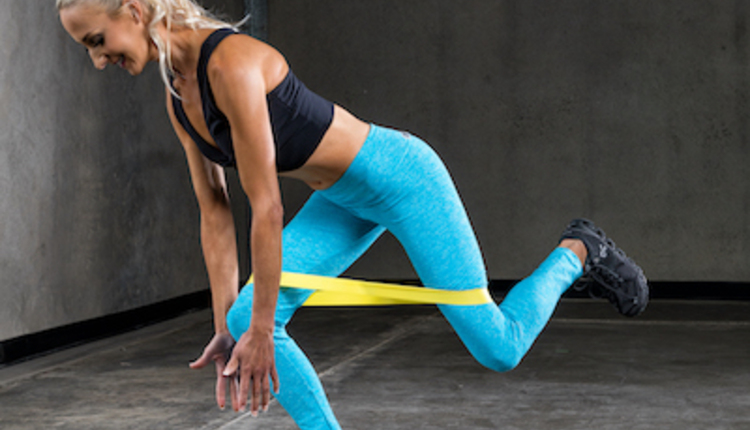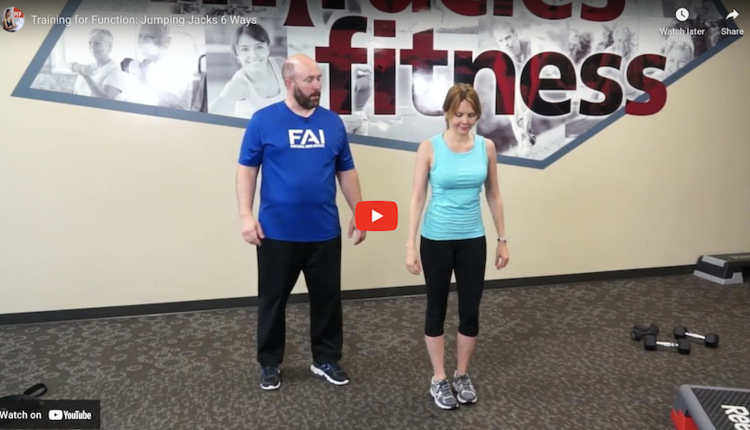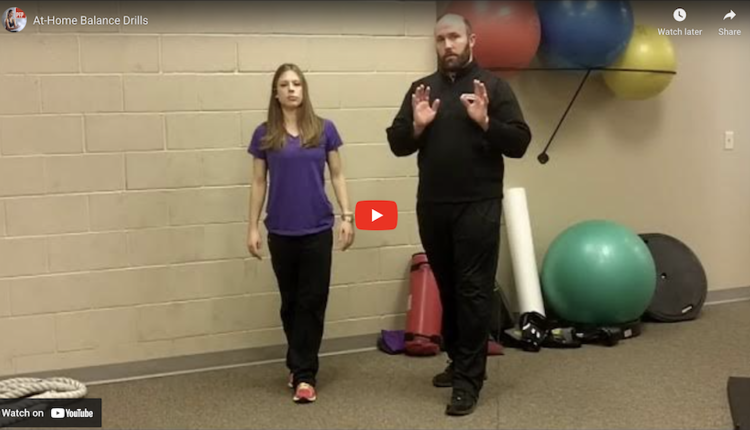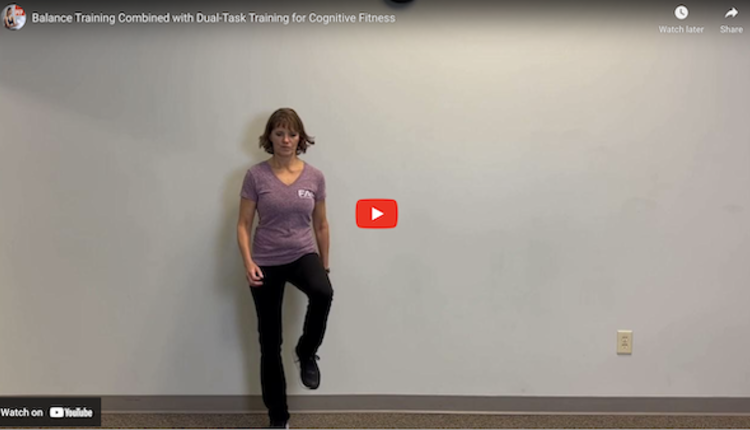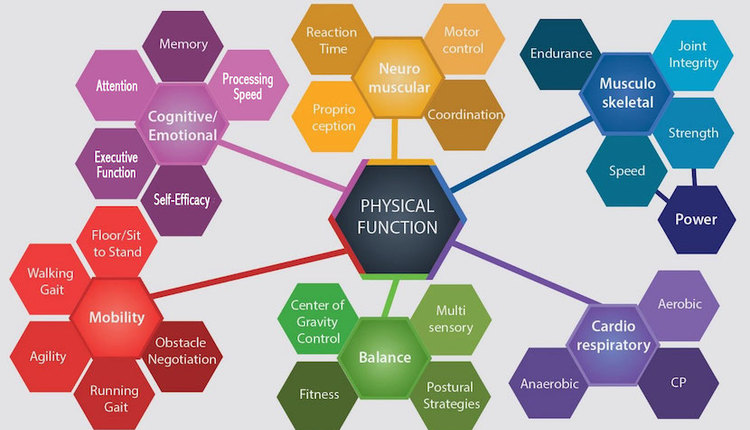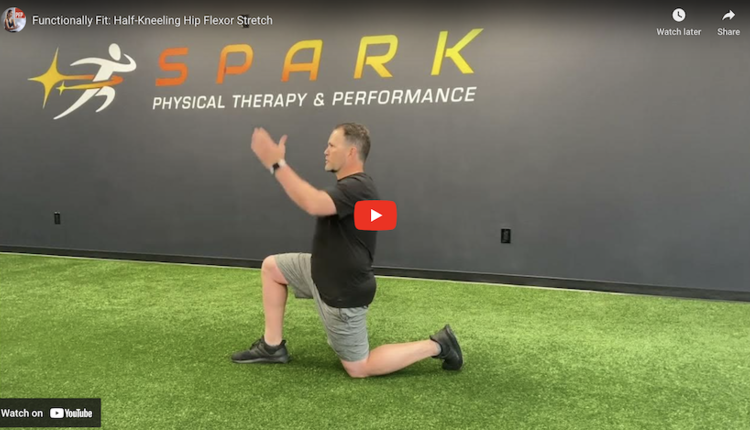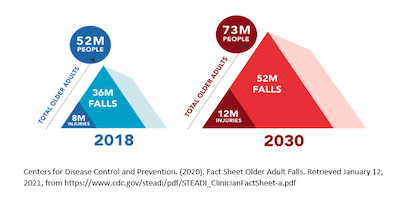
The statistics on fall-related injuries and deaths are not getting better. In fact, the trends are quite alarming. I remember while I was working on my PhD research, Dr. Atkins died due to a fall at a young age of 72. Then sadly in 2008 on my dissertation defense date, I remember the irony of the front page of the newspaper which listed the death of a well-known person due to a fall. In the past 10 years there has been a 30% increase in the fall death rate, and while that number is staggering, it does not really capture the whole issue.
When we look at life-changing injuries the numbers are far, far worse. In 2018 there were eight million fall-related injuries, which required treatment in ERs, urgent cares, or physician offices. Falling now accounts for 25% of all hospitalizations in the US. With 1 out of 4 people over age 65 falling each year and 1 out of 3 over age 70, we are poised to see a massive increase in these numbers in the next 10 years. By the year 2030, it is estimated we will have over 50 million falls per year with over 12 million injuries! The need for greater intervention is critical now more than ever.
Balance training is one of the six domains of human function we talk so much about in our Functional Aging Training model. These six domains are not just for older clients, but should be considered when training anyone over the age of 40.
When we look at balance we see it has four subdomains that each have multiple factors. Training balance requires training postural and center of gravity control, just as much as fitness factors like strength and endurance. A trainer’s approach to training balance should be diverse and include some lower body strength exercises, as well as stepping strategies and multi-sensory challenges.
Here are some great examples that you can incorporate into any training session and take just 5-10 minutes.
Stepping exercises
- Step touches or step taps
- Step to a color (you can use agility dots that have various colors)
- Step-ups, both forward and sideways
- Step sideways with a reach
- Side-to-side shuffling
Marching patterns
- Forward marching
- Sideways marching
- Marching as if stepping over a parking block or sleeping dog
- Marching legs straight, high leg marching
- Marching on tiptoes
Walking patterns
- Tip-toe walking
- Wide/straddle a log walking
- Narrow walk the straight line walking
- Tandem walking… heel to toe
Strength exercises
- Lunge patterns, forward, diagonal, sideways
- Squatting with dynamic movement, while rowing, pressing, playing catch
Currently, you might not have much time for balance circuits in your training. With a little planning though, your warm up or cool down could be a sequence of balance activities, and your strength training components could start to add a few balance challenges. Then you are on your way to helping reduce what is going to become a national crisis as we approach over 12 million fall related injuries every year!
Dr. Dan Ritchie is the president and co-founder of the Functional Aging Institute. Dan also owns and operates Miracles Fitness in West Lafayette, Indiana, where they have trained over 2,500 clients since 2007. Dan was the 2014 PFP Trainer of the Year and is a sought-after expert and speaker at national and international events on topics like balance for older adults, fitness business development, the global aging phenomenon, and functional aging training models. Learn more at www.functionalaginginstitute.com.


